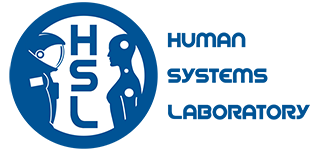| Title | Influence of head orientation on visually induced pitch and roll sensation |
| Publication Type | Journal Article |
| Year of Publication | 1975 |
| Authors | Young, L. R., C. M. Oman, and J. M. Dichgans |
| Journal | Aviat Space Environ Med |
| Volume | 46 |
| Pagination | 264-8 |
| Date Published | Mar |
| MVL Report Number | 75.20 |
| Keywords | *Head, *Motion Perception, *Posture, *Visual Perception, Aerospace Medicine, Human, Photic Stimulation, Receptors, Sensory, Support, U.S. Gov't, Non-P.H.S., Vestibule/innervation, Visual Fields |
| Abstract | Observers viewing rotating scenes in their periphery frequently experience self-motion in the opposite direction. A full field (360 degrees) flight simulator projection system was used to investigate the sensations resulting from pitch, roll, and yaw stimuli at various head orientations. Steady yaw rate (circularvection) and development of a constant roll tilt angle, for the head erect and constant velocity yaw and roll stimuli, confirmed previous reports. Pitch stimuli also were found to produce a sensation of tilting to a steady pitch angle, which was much stronger for pitch forward than backward. Pitch and roll effects were strongly dependent on head position, increasing for the head rolled 90 degrees to the side or inverted, and decreasing for the head pitched 25 degrees forward. These results support a hypothesis that visually induced tilt is limited by conflict with otolith information. |
